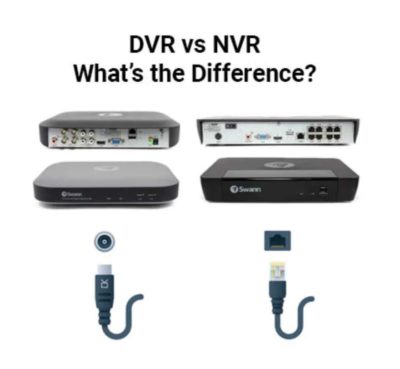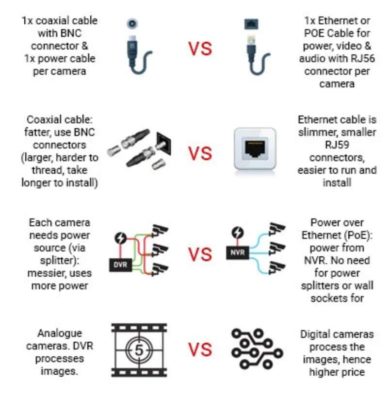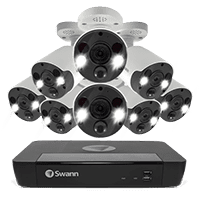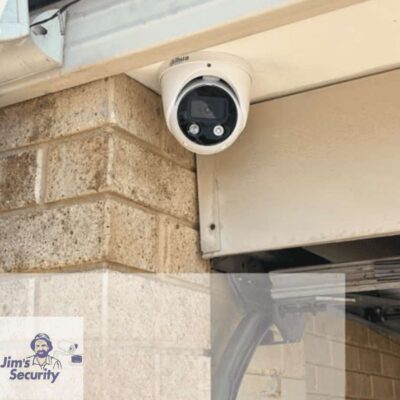Descriptions of security cameras and CCTV systems are often characterised by technical jargon, sometimes making it difficult for those other than tech enthusiasts and security experts to understand a product’s full functionality.
A common culprit is the pair of terms ‘NVR’ and ‘DVR’.
What do they mean? How do they relate to your security system? And is one better than the other?
When it comes to installing Swann CCTV systems, or any security system for that matter, it is important for customers to understand the difference between each of these video recorder options and how they relate to the functionality of their security cameras to make a well-informed purchase.
Of course, our security experts are always on hand to advise and assist you in deciding the best solution for your home or business. But, if you’d like to learn more about why these decisions are made, you’re in the right place.
Let’s start with the basics. The term ‘DVR’ stands for ‘Digital Video Recorder’, while the term ‘NVR’ is short for ‘Network Video Recorder’. This simply means that if you have a Digital Video Recorder video data is processed at the recorder. Whereas if you have a Network Video Recorder, data is processed at the camera and then streamed to the recorder
While it is now obvious that the terms ‘DVR’ and ‘NVR’ both refer to a type of recorder, the fact that the recorder type informs camera type can be easily overlooked or confusing to understand. To put it simply, if you have a DVR your system will use analogue cameras, and if you have a NVR recorder your cameras will be IP based (digital).

Image sourced from: Swann Security
Why Does Recorder Type (DVR/NVR) Determine Camera Type (Analogue/IP)?
This is because each system requires a different kind of cabling.
DVR recorders use coaxial cabling (BNC), consisting of two separate cables (one to power the camera and one to carry information from the camera to the DVR) encased together in one covering. For analogue cameras, a cable must be run between every camera and the recorder, as the data is processed at the site of the recorder.
On the other hand, NVRs use Cat5e/Cat6 data cabling, which both allow for PoE (Power over Ethernet), Therefore, it is not necessary for each camera to be individually connected to the DVR as PoE allows Cat5e/Cat6 cables to carry electrical power to every camera over an existing data connection. IP cameras encode and process data at the point of the camera, allowing for trouble free remote viewing of video footage and back-up on the cloud – with the NVR acting as an additional point of storage.

Image sourced from: Swann Security
What Makes an IP Based System Better than an Analogue System?
Analogue cameras (DVRs) come with a number of disadvantages, these include:
- Compromised image quality: analogue cameras have overall lower video quality than that of their IP counterparts, and have considerably poor zoom in quality due to traditionally being restricted to low resolutions such as 720MP or 1MP. While DVR systems are now available in 4K specifications, the quality of DVR 4K is not comparable to digital IP 4K. Compared to IP cameras, analogue cameras will show a much grainier and blurrier image with reduced frame rates.
- BNC/Coaxial cabling: these cables are wide and rigid and therefore difficult to run in tight spaces. Cable also needs to be run between every single camera and the recorder. There is no wireless option, standard coaxial cables do not support audio and PoE cannot be integrated.
- Pose security concerns: analogue cameras are more vulnerable to security breaches as video feeds are not encrypted, footage on the DVR itself can also be physically stolen.
IP cameras (NVRs) offer several benefits which analogue systems do not, these include:
- Superior Image quality and Higher frame rates: IP cameras have noticeably higher video quality than their analogue counterparts, offer more site ranges, and boast significantly better zoom in capabilities (this is important for facial recognition and detecting number plates).
- Ethernet Cables and PoE: The use of data cables such as Cat5e/Cat6 will future proof your system for future upgrades and they are thinner and more flexible than coaxial cables, making them easier to run in tighter spaces allowing for more flexibility and choice when mounting. Unlike BNC/Coaxial cables (analogue) these do not need to be run between every camera and the recorder. If required, you can set up a point to point link in your network to expand CCTV coverage to a seperate building. PoE also allows Cat5e/Cat6 cables to carry electrical power over an existing data connection, removing the need for additional power supplies as required in a DVR system.
- Video encryption: video is encrypted, making storing your footage more safe and secure.

Swann 8 Camera 4K Ultra HD NVR Security System
Overall, the main difference between an NVR and DVR system is the type of cabling and cameras that each system uses. However, that being said, these factors ultimately influence the wider functioning of one’s security system.
While it is generally agreed upon that NVR systems are considered superior to their DVR counterparts (due to better image quality, tighter security measures and easier installation), cost is often the main drawback when it comes to installing NVRs and IP cameras. Understandably, NVRs tend to be more expensive than DVR systems – an important consideration for budget conscious customers.
Here at Jim’s Security we recognise that each home, business and customer has different security needs and requirements and will work with you to provide the best solution possible. Give us a call on 131 546 or book a free onsite quote.


